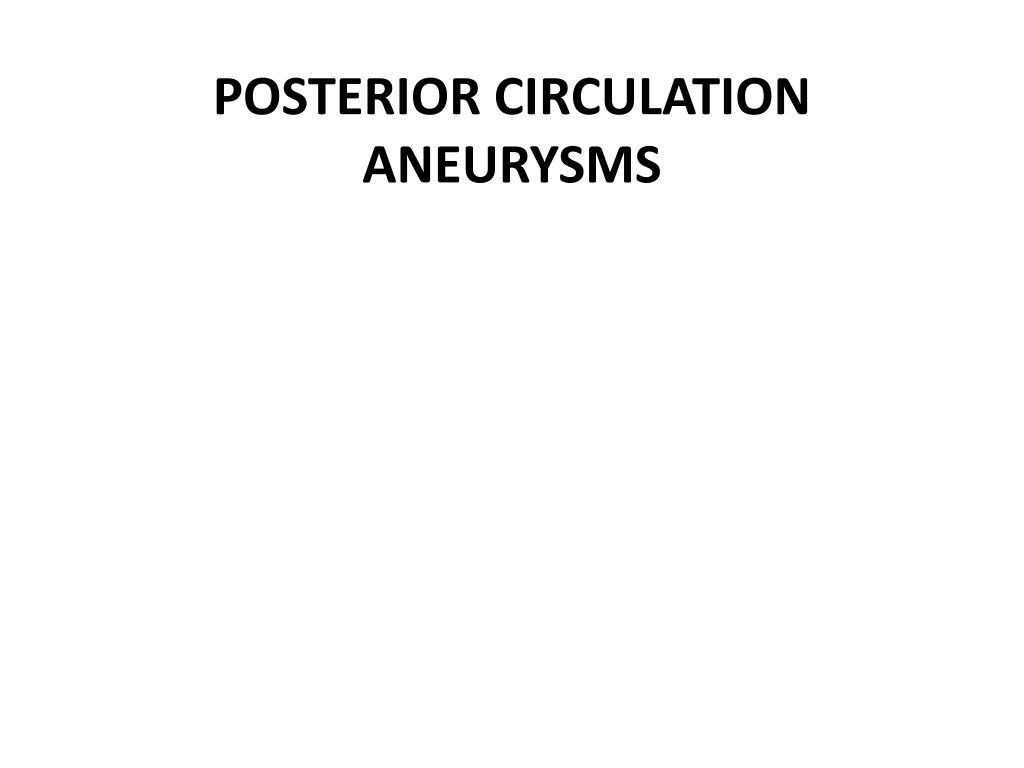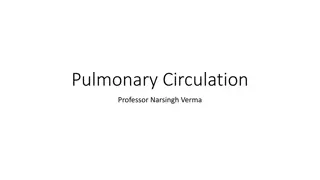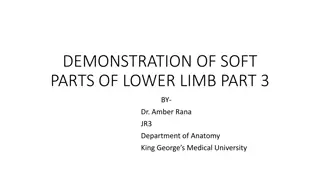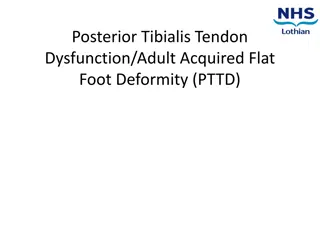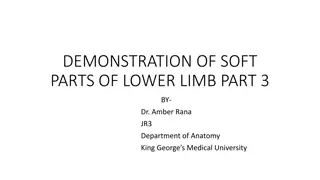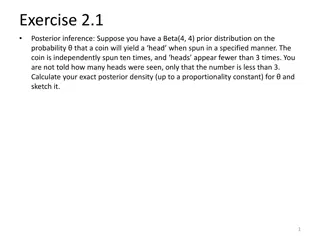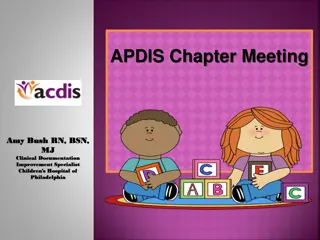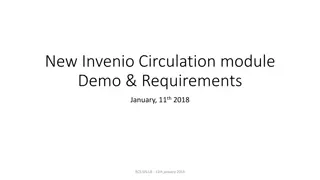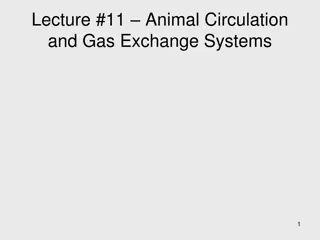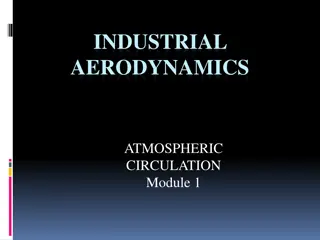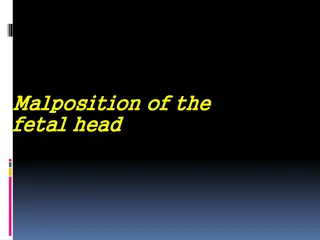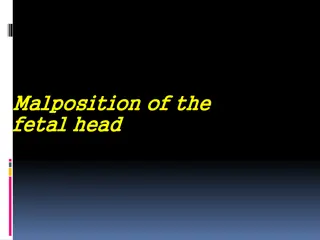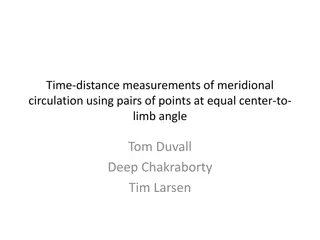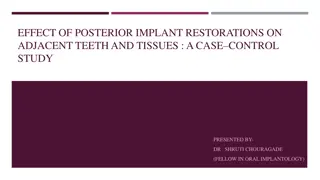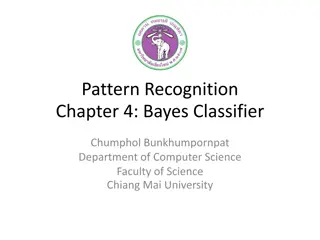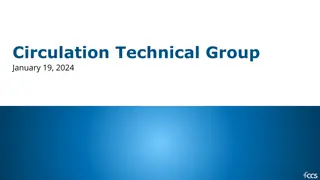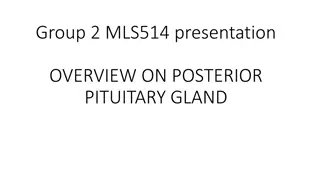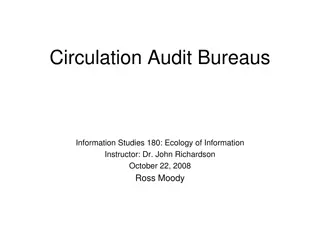Posterior Circulation Aneurysms Overview
Posterior circulation aneurysms account for 15% of intracranial aneurysms, primarily affecting females in their fifth and sixth decades of life. They can manifest as saccular, fusiform, or dissecting types, with common locations including the basilar apex, origins of various arteries, and the basilar trunk. Associated anomalies may involve vascular malformations or connective tissue disorders. Clinical presentations range from subarachnoid hemorrhage to cranial nerve deficits. Understanding the anatomy and clinical implications of these aneurysms is crucial for effective management and treatment strategies.
Download Presentation

Please find below an Image/Link to download the presentation.
The content on the website is provided AS IS for your information and personal use only. It may not be sold, licensed, or shared on other websites without obtaining consent from the author.If you encounter any issues during the download, it is possible that the publisher has removed the file from their server.
You are allowed to download the files provided on this website for personal or commercial use, subject to the condition that they are used lawfully. All files are the property of their respective owners.
The content on the website is provided AS IS for your information and personal use only. It may not be sold, licensed, or shared on other websites without obtaining consent from the author.
E N D
Presentation Transcript
POSTERIOR CIRCULATION ANEURYSMS
Introduction 15 % of all intracranial aneurysms Technically difficult to tackle Present in the fifth and sixth decades of life, Most often in females. Saccular, fusiform or dissecting.
Saccular aneurysms of posterior circulation most often occur at the basilar apex(45-55%) origins of SCA, PICA and PICA-VA junction, PCA, lower third basilar artery, VBJ and AICA.
Fusiform aneurysms of vertebrobasilar system occur with intracranial atherosclerosis Dissecting aneurysms 31% of the vertebral artery lesions ,found in young males Dolichoectic aneurysms of vertebral and basilar arteries result from dissections that produce fusiform degeneration
Anomalies associated with aneurysm Hypoplastic or fetal PCAs, persistent carotid- to-basilar anastomosis arteriovenous malformation in the occipital lobes or cerebellum Connective tissue disorders(e.g. Polycystic kidney disease, Marfan s syndrome, Ehlers- Danlos syndrome)
Anatomy Three vascular territories Basilar apex Basilar artery(BA) bifurcation, Posterior cerebral artery(PCA), Superior cerebellar artery(SCA), BA-SCA junction, Upper basilar artery.
Anatomy Basilar trunk - Midbasilar artery, Anterior inferior cerebellar artery(AICA). The vertebral trunk Vertebral artery(VA), Posterior inferior cerebellar artery(PICA), VA-PICA junction, Vertebro-basilar junction(VBJ).
Clinical presentation Acute subarachnoid haemorrhage Intraventricular haemorrhage Obstructive hydrocephalus
Clinical presentation Cranial nerve deficit Occulomotor paresis aneurysms of basilar apex, upper basilar artery and superior cerebellar artery Abducens dysfunction aneurysms of vertebrobasilar junction and lower basilar trunk VII and VIII cranial nerve involvement(AICA) IX,X,XI(PICA) XII nerve PICA and vertebral artery aneurysm.
Giant aneurysms of the vertebrobasilar system present with mass effect on adjacent cranial nerves and brainstem Dissecting aneurysms SAH non-hemorrhagic infarction of thalamus, brainstem or cerebellum signs of cerebral thrombosis; occulomotor palsy Horner s syndrome
Diagnostic studies Computed tomography Magnetic Resonance Imaging Four-vessel digital subtraction angiography
Management Options Clipping Endovascular Bypass procedures Others
Surgical indications Complex aneurysms Vasospasm of parent vessel Aberrant anatomy of vessels making Negotiations difficult Patients choice
Basilar apex Trajectory Aneurysms Approach Basilar top Anterosuperior Subtemporal PCA Pterional transsylvian SCA Transsylvian Upper basilar artery Modified pterional transcavernous transsellar Middle subtemporal transtentorial Orbitozygomatic Extended orbitozygomatic approach
Basilar trunk- lateral Aneurysms Trajectory Approach Midbasilar artery Lateral Transpetrosal (Kawase) AICA Transtemporal (Sekhar) Retrolabyrinthine transsigmoid Combined supra- and infratentorial approach Transoral transclival approach Transoral transclival with Le Fort I maxillotomy( Extended middle fossa approach
Vertebral trunk Aneurysms Trajectory Approach VA, Posteroinferior Midline suboccipital PICA, Paramedian suboccipital VBJ Far lateral approach Extended far-lateral approach
Subtemporal approach Supine position with head tilted. Temporal craniotomy Temporal lobe retracted upwards till cerebral peduncles Field centered on third nerve Temporal lobe resection indicated if required
Advantages Proximal control is ease Excellent visualization and easy dissection of perforators Anteriorly and Posteriorly directed aneurysms can be tackled easily. Fenestrated clips can be placed well
Disadvantages Field is narrow Access to contralateral P1 is difficult Temporal lobe damage Intraoperative bleeding is difficult to control III nerve palsy is very common
Transylvian approach Pterional craniotomy OZ osteotomy to improve superior view Bone removal (if required) sphenoid ridge anterior clinoids dorsum sellae clivus medial petrous apex
Advantages Familiarity with approach Proximal control is straight forward Wide exposure is possible Both P1 can be exposed
Disadvantages Exposure of posteriorly located perforators is difficult Distal clip blade is difficult to visualize Anteriorly or posteriorly directed aneurysms difficult to tackle
Orbitozygomatic and Extended Orbitozygomatic approach Extends the pterional approach by removing the superior and lateral portions of the orbit Higher view of basilar apex above the posterior clinoid process. Inferior exposure by removing three intradural bony obstacles-the anterior clinoid process, the posterior clinoid process and the dorsum sellae. Drilling the clivus opens a window to the anterior surface of the basilar artery
Transpetrosal approach Retrolabyrinthine, translabyrinthine and transcochlear Approach the basilar trunk from lateral side ENT surgeon's assistance is required
Retrolabyrinthine exposure bone posterior to semicircular canals is removed. hearing is preserved Translabyrinthine exposure semicircular canals are removed hearing is sacrificed seventh nerve is preserved Transcochlear hearing and seventh nerve both are sacrificed maximum bone is removed
Extended middle fossa approach Popularized by Kawase Temporal craniotomy Extradural mobilization of temporal lobe Anterior petrous apex drilling of KAWASE'S triangle Approach the aneurysm from superior and anterior trajectory Hearing preservation
Far lateral approach Lateral suboccipital approach, extreme lateral approach, extreme lateral inferior transcondylar exposure(ELITE) Most common approach to aneurysms of the vertebral trunk
Position lateral decubitus with neck flexion and rotation and ipsilateral neck flexion Hockey stick or S shaped incision Bone removed paramedian suboccipital craniotomy half to two third of condoyle posterior arch of C1 rim of foramen magnum
Extended far lateral approach Superior occipital bone is removed Transverse- sigmoid junction is exposed CPA is entered
Combined supra-infra tentorial app Two maneuvers - Posterior mobilization of sigmoid sinus Division of tentorium Superior petrosal sinus divided Vein of Labbe preserved Minimal brain retraction
Midline Suboccipital craniotomy Indications I. bilateral vertebral aneurysm II. distal PICA aneurysms III. bypass procedures
Alternative surgical techniques Parent artery occlusion Wrapping methyl methacrylate silicone, polyvinyl and temporalis fascia to induce fibrosis in the wall of the aneurysm Trapping of distal aneurysms distal PICA aneurysms
Ligation When both Pcom are large in size, When balloon occlusion suggests good collateral circulation Gradual compression can be used Vertebral artery tolerate ligation very well if opposite Vertebral is not aberrant.
Cardiac bypass with hypothermic circulatory arrest Giant and complex posterior circulation aneurysms 24 degree Celsius core cooling, the brain will be protected for 1 hour of complete circulatory arrest. Associated with significant morbidity and mortality rates
Endovascular management Basilar bifurcation Lower basilar trunk Vertebrobasilar junction Patients choice
Endovascular obliteration Detachable balloons Silicone balloons filled with iso- osmolar contrast medium (Iohexol) solidification agent like HEMA, latex balloons filled with iohexol or silicone Detachable coils Free pushable coils (Cook) MDC Mechanically Detachable Coils (Balt, France) IDC Interlocking Detachable Coils (Japan) GDC Guglielmi electrically Detachable Coils (USA)
Factors that limit successful endovascular aneurysm occlusion dome-to-neck ratio less than 2 neck width greater than 4 mm, inadequate endovascular access, unstable intraluminal thrombus if any arterial branch is incorporated in neck Stents can be used for these aneurysm
